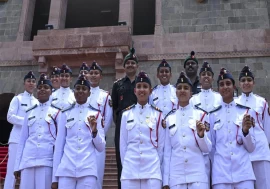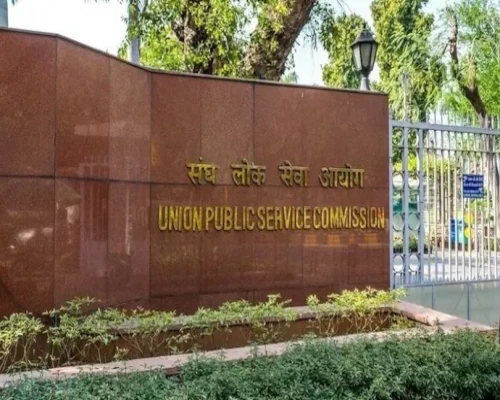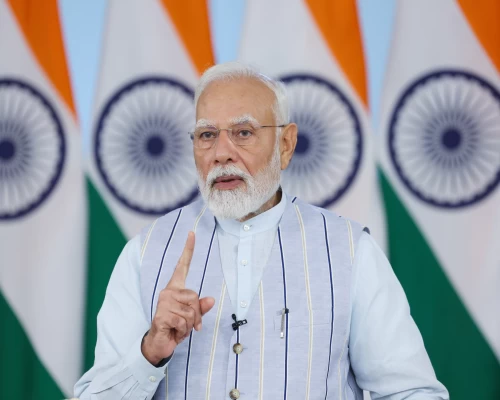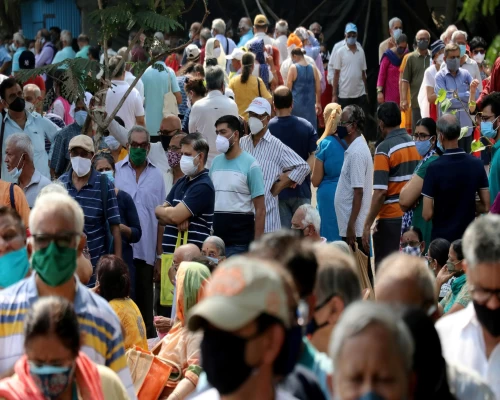
Prime Minister Narendra Modi’s just concluded visit to the USA has instantly gone down in the history as it establishes India as a major global player in the years to come. While India and the USA usher in an era of technology driven equal collaboration, it marks the beginning of a journey of which, as Prime Minister Narendra Modi aptly put it, “Sky is not the limit”.
Indeed, the credit goes to Prime Minister Narendra Modi who, during the last 9 years, took a series of unorthodox and path-breaking decisions, which enabled India to achieve a quantum jump in key areas, as a result of which, for example, the USA which had begun its Space journey several years before India, today solicits India as an equal partner in its future endeavours.
During a ceremony at the Willard Inter-Continental Hotel in Washington on June 21, India became the 27th country to sign the Artemis Accords.
The Artemis Accords establish a practical set of principles to guide civilian space exploration cooperation among nations for peaceful purposes. It enables India to participate in the US led Artemis programme for exploration of moon and other celestial objects. Significantly, the pact will pave the way for easing of restrictions on import of Critical
Technologies in space domain especially electronics, benefitting Indian companies to develop systems and innovate for US markets. It will also facilitate participation of India in more scientific programmes jointly, allow access to common standards for long term engagements in activities including human Spaceflight programmes and stronger engagements with the US in more strategic areas including micro-electronics, quantum, space security etc.
The Artemis Accord is a non-binding agreement with no financial commitments. It was signed on October 13, 2020 by eight Founder Nations, - Australia, Canada, Italy, Japan, Luxembourg, UAE, UK and the United States. Its members include the traditional US allies like Japan, France, New Zealand, UK, Canada, South Korea, Australia and Spain while African nations like Rwanda, Nigeria etc are the new partners.
Let us try to understand how India will stand to gain by joining the Artemis Accords. According to an estimate, global government expenditure for space programmes hit a record of approximately $103 billion last year. With almost $62 billion, the US Govt spent more than half of the total. The U.S. was followed by China, with almost $12 billion, which is not a part of the consortium, as also Russia which ranks 5th with an annual spending of $3.4B. India ranks 7th with an annual budget of $1.93B.
Let us also try to compare the Space programmes of various nations by the number of Orbital launches in the year 2022. PayLoadSpace website says 186 orbital launches were attempted last year, with 76 by the US, China 62, Russia 21 while India made 5 orbital launches. Now, let us compare the third key parameter, viz. number of satellites in space. As of 4th May 2023, the satellite tracking website “Orbiting Now” lists 7,702 active satellites in various Earth orbits. US has the maximum 2,926 operational satellites, followed by China – 493, UK – 450, Russia – 167, while India ranks 8th with 58 satellites.
India’s space programme is six decades old, and the ISRO came into being seven years later in 1969; international cooperation has been its hallmark with ISRO collaborating with various launch agencies such as Russia’s Ruscosmos and Europe’s ESA, while ISRO has launched over 385 foreign satellites from over 34 countries.
Before 2014, ISRO used to undertake launches now and then, but after PM Narendra Modi opened the doors of the Space sector to private sector participation, today ISRO is working with nearly 150 private StartUps. Deep Space Missions require billions of dollars and benefit humanity at large, it is only imperative that nations pool in their resources for the benefit of humankind. Without losing time, like-minded nations have to move on, collaborate and work on each other’s gains and experiences and as PM Narendra Modi stresses, “we must not work in silos”!
We may not have to wait long to witness the first major explicit gain of the newfound India-US camaraderie in the Space sector. An Indian astronaut may be sent to the International Space Station (ISS) next year. US President Joe Biden has already confirmed this in the White House after a meeting with Prime Minister Narendra Modi on Thursday.
The joint statement by India and the United States during PM Modi’s ongoing visit said NASA would provide “advanced training” to Indian astronauts at one of its facilities.
Other sectors too will see a leap in mutual gains as the two sides. U.S. memory chip firm Micron Technology, Inc said on Thursday it would invest up to $825 million in a new chip assembly and test facility in Gujarat, India, its first factory in the country. Total investment in the facility will be $2.75 billion, with support from the Union Government and Gujarat State government.
President Biden and PM Modi also agreed to the establishment of a joint Indo-U.S. Quantum Coordination Mechanism to facilitate collaboration among industry, academia, and government, and work towards a comprehensive Quantum Information Science and Technology agreement. A $2 million grant program is being launched under the U.S.-India Science and Technology Endowment Fund for the joint development and commercialization of Artificial Intelligence (AI) and quantum technologies, and encourage public-private collaborations to develop High Performance Computing (HPC) facilities in India.
President Biden also reiterated his government’s commitment to work with U.S. Congress to lower barriers to U.S. exports to India of HPC technology and source code. The U.S. side pledged to make its best efforts in support of India’s Center for Development of Advanced Computing (C-DAC) joining the U.S. Accelerated Data Analytics and Computing (ADAC) Institute. As also, 35 innovative joint research collaborations in emerging technologies will be funded by the U.S. National Science Foundation (NSF) and India’s Department of Science and Technology (DST).
President Biden assured the US support for India’s leadership as Chair of the Global Partnership on AI. The two leaders applauded Google’s intent to continue investing through its $10 billion India Digitization Fund, including in early-stage Indian StartUps.
India’s Department of Atomic Energy (DAE) will make a $140 million in-kind contribution to the U.S. Department of Energy’s (DOE’s) Fermi National Laboratory toward collaborative development of the Proton Improvement Plan-II Accelerator, for the Long Baseline Neutrino Facility — the first and largest international research facility on U.S. soil.
In the health sector, research institutes of both countries will collaborate on affordable cancer technology programmes, including for the development of AI enabled diagnostic and prognosis prediction tools, and on diabetes research.
Giving wings to India’s civil aviation sector, Air India will buy 220 Boeing planes for $34 billion. The most apparent sign of India-US ties being at its ever best is that, as PM Modi mentioned in his address to the US Congress, the US is today not only India’s largest trade partner but the Defence sector collaboration reflects the trustworthy relationship.
To conclude with the closing sentence of the Joint Statement issued at the end of PM Narendra Modi’s USA visit, “Our (India and USA) ambitions are to reach ever greater heights." /PIB/
(The author is a Union Minister.)










 (13)_500_x_400.webp)


